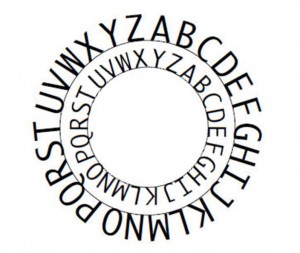I recently had occasion to look at a job description for an IT contract position. I could recognize a lot of the words, but the way they were put together gave me almost no clue what the company really needs someone to do. So I called a friend who’s pretty far up the IT food chain and read it to him, just in case I was being dim. Neither of our secret decoder rings was up to the task, however, so we could only speculate about what the job might really be—or who could do it well.
This description came from a big company and went through a reputable recruiting agency. In this case, of course, part of the problem relates to the process itself, since in many cases outside recruiters cannot talk to the hiring manager in order to clarify the description and requirements. So if the hiring manager—or whoever wrote the description—is not very good at describing jobs, an HR intermediary may not know the difference, and the mystery document will just get propagated out to the recruiter(s) and passed on to the prospects.
Internal processes can be just as problematic–and when a confusing or inadequate job description makes it onto the Careers site or the job boards, job-seekers are at a considerable disadvantage, since they have nothing else to go by. In these days, when applications are many and keywords often rule, applicants have to figure out how to highlight their qualifications; and that’s tricky when the requirements are not clear.
In the description that prompted this post, I found several common problems, such as:
- Requirements that just say “Understanding of X”. (The spectrum of interpretations that can be applied to “understanding” is broad indeed! Define the word? Know X when you see it? Eat, sleep and breath X?)
- Requirements that seem to be repeating other requirements in different words. (Is there a subtle-but-important distinction? Or just two different authors? Perhaps a careless revision?)
- Requirements that use names in a vague way, and/or acronyms. (Is the requirement referring to ” X the product” or “X the methodology”? Is that unfamiliar acronym a variant, a typo, an internal reference, or just something that hasn’t made it to Wikipedia yet?)
I could go on. But the net result is that candidates for this position will not have a good idea of what’s involved in the job until/unless they get as far as an interview. Therefore they won’t be able to make an informed decision about applying or not. They won’t be able to tailor their resumes appropriately. Et cetera.
And the manager(s) will spend unnecessary time looking for the “right” person, who might not even be found. A lot of misfire hires result from failure to define and describe a job effectively.
People can learn to write better job descriptions, and they should. But in the end, there are two really basic practices that will make a huge difference:
- Use simple sentences.
- Use simple words.
Just following those “simple” rules will eliminate ambiguity most of the time. And don’t take my word for it. Get some good advice from HRDailyAdvisor. (Yes, they’re selling something, but the advice is good anyway.)
(Want your own “decoder ring”? Get it from the Exploratorium.)
Cynthia Giles has followed a serpentine career path from academia to publishing to marketing and design to information technology and corporate communications. There’s plenty of detail about this journey at www.cynthiagiles.com, but briefly--the common theme has been ideas, and how to present them effectively. Along the way, she became an accidental expert on data warehousing and business intelligence, and for the past ten years she has combined corporate contracting with an independent consulting practice that focuses on marketing strategy for smaller businesses and non-profits.
Having spent quite a bit of time looking for work, and anywhere from two weeks to two years inside a wide variety of American companies—she has given much thought to what works (and what doesn’t) when it comes to creating a great employment fit.


The problem is that the “managers” have no clue about the description. It’s like when you find a job description for a programmer that include requirements like photoshop and 3DMax. Anyone with a bit of idea would know the description is mixing 3 different roles, but the person writing the description doesn’t. And the recruiting agency? Seriously, they barely do anything but copy&paate and maybe add some more neaninless buZzwords here & there.
Thanks for the comment! I think a lot of job-seekers and contractors share the frustration with inadequate (and sometimes nonsensical) job descriptions. But I have to say, I’ve also heard a fair amount of frustration from recruiters. In many cases they would love to get better information and just can’t.
It seems as if there are many points of failure in the system, which means there can’t be just one point of solution–but at least everyone involved could try a little harder.